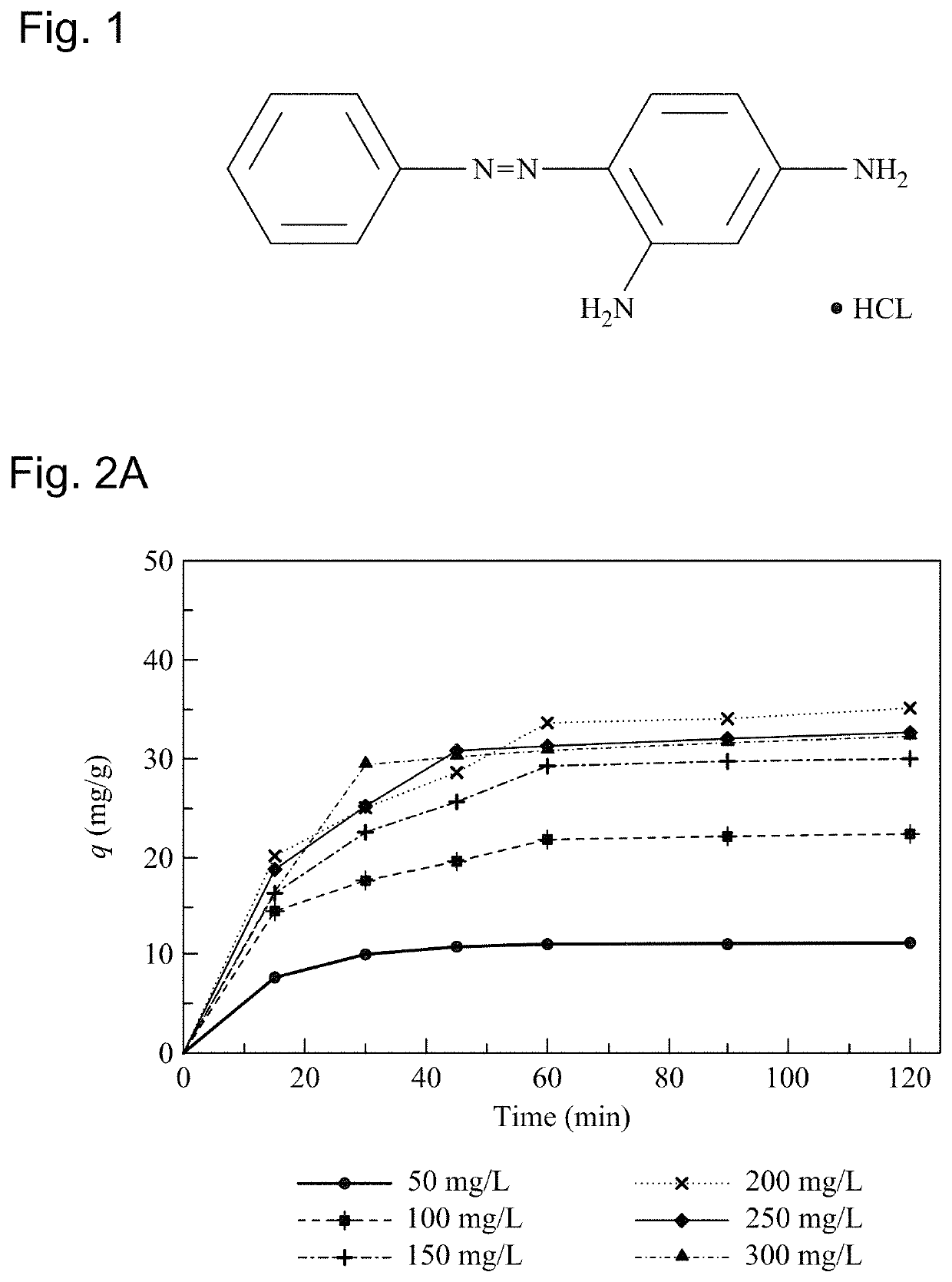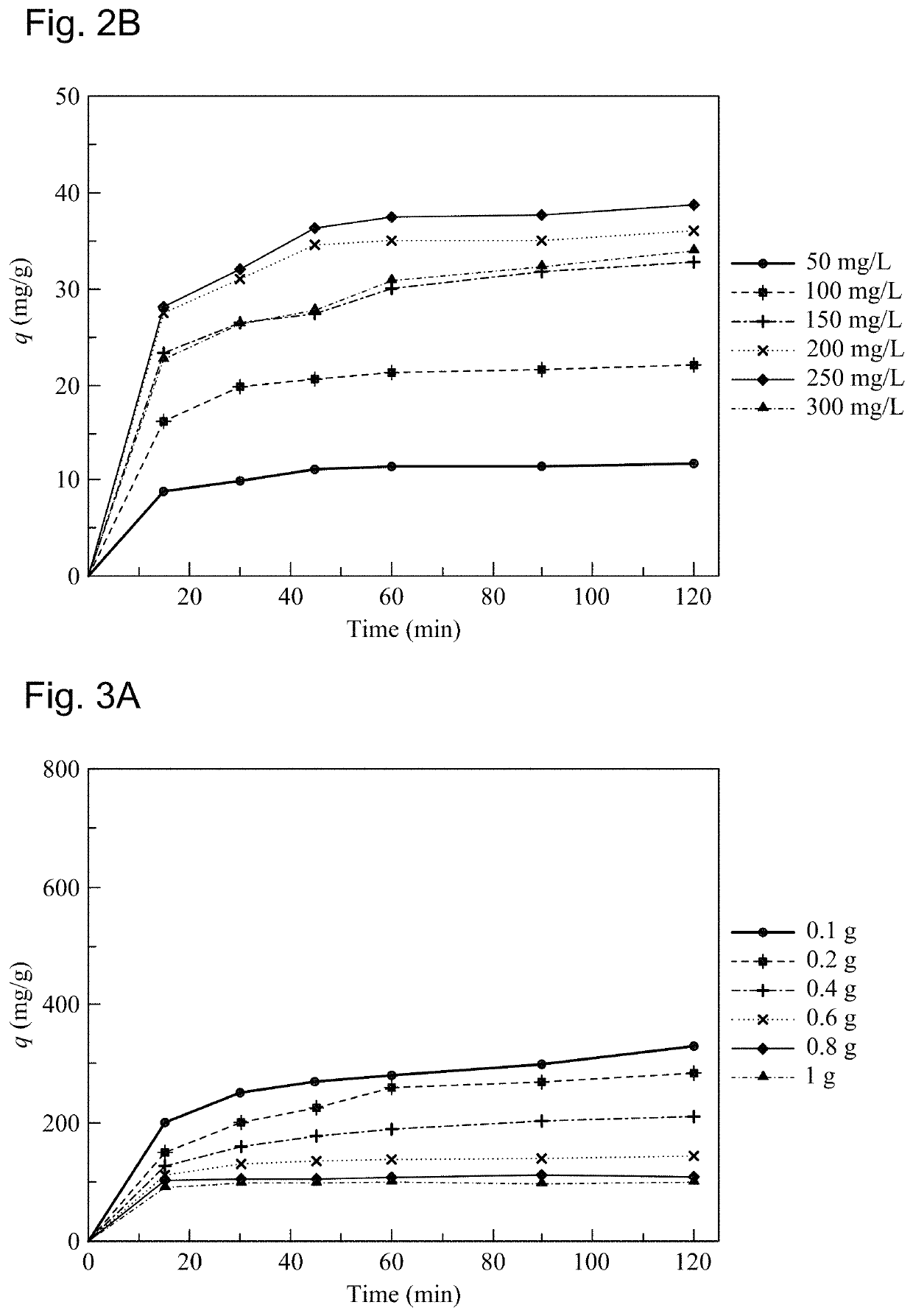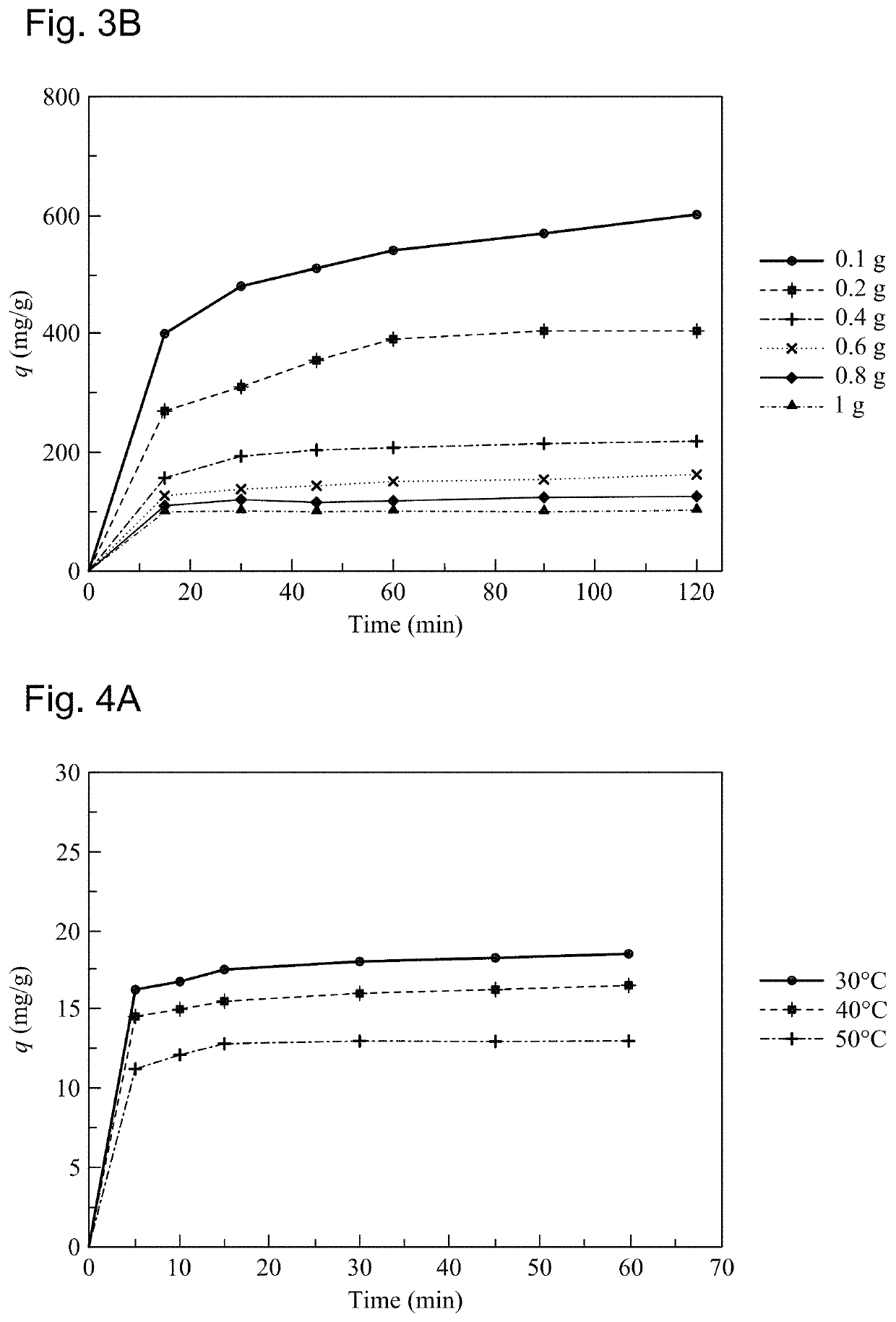Method for making and using a dye sorbent
- Summary
- Abstract
- Description
- Claims
- Application Information
AI Technical Summary
Benefits of technology
Problems solved by technology
Method used
Image
Examples
examples
Materials and Methods
[0082]Sawdust was obtained from a nearby wood working factory and divided into two portions by weight. One part was chemically treated, while the second was kept for use in its raw form. The first part was treated with sulfuric acid in the ratio of 4:3 parts by weight. The material was kept in a vacuum oven for 24 hours at 150° C. The sulfonated material was washed thrice with distilled water to remove any unreacted acid and dried at 100° C. for 24 hours. After drying, the material was treated with 5% hydrogen peroxide in a ratio of 500 mL of hydrogen peroxide per 100 g of sulfonated material for 2 hours at 25° C. The peroxide-treated material was washed thrice with distilled water to remove any unreacted peroxide and dried at 60° C. for 12 hours. The material was finely grounded and passed through sieve ISS 600 and stored. This material was used in adsorption experiments as chemically activated sawdust. The second part of the sawdust was saturated with the dist...
PUM
| Property | Measurement | Unit |
|---|---|---|
| Temperature | aaaaa | aaaaa |
| Temperature | aaaaa | aaaaa |
| Length | aaaaa | aaaaa |
Abstract
Description
Claims
Application Information
 Login to View More
Login to View More - R&D
- Intellectual Property
- Life Sciences
- Materials
- Tech Scout
- Unparalleled Data Quality
- Higher Quality Content
- 60% Fewer Hallucinations
Browse by: Latest US Patents, China's latest patents, Technical Efficacy Thesaurus, Application Domain, Technology Topic, Popular Technical Reports.
© 2025 PatSnap. All rights reserved.Legal|Privacy policy|Modern Slavery Act Transparency Statement|Sitemap|About US| Contact US: help@patsnap.com



